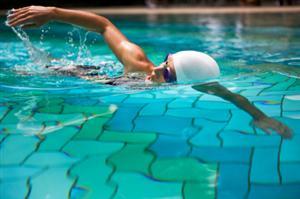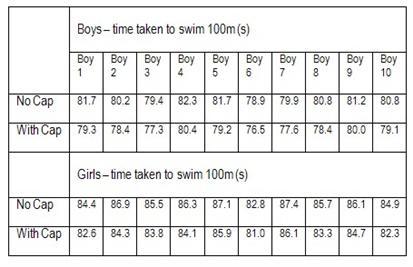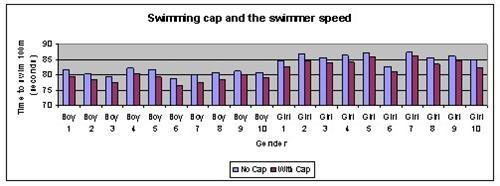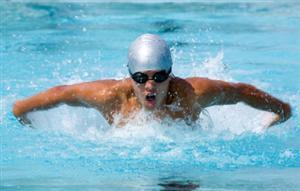Hypothesis
Using the swimming cap will help to increase the speed of the swimmer and he will be able to swim the 100m dash in a shorter time.
Overview
The swimming cap
The type of swimsuit a swimmer wears is important. Whether or not a swimmer wears a swimming cap is an important consideration as it affects his performance. A cap protects a swimmer’s hair from the chlorine in the pool. But more importantly, it improves the performance of a swimmer because it reduces the amount of drag/resistance.
There are many designs of swimming caps. Caps come in all sizes and colors. They are normally made of polyester, latex, nylon, silicon or Lycra. Competitive swimmers usually wear latex caps because such caps fit the head snugly. Competitive swimmers who are allergic to latex materials can use silicone swimming caps. Although silicon swimming caps are more expensive than latex ones, they are more durable and last longer.
Some swimming caps come with a chin strap. Such caps are suitable for swimmers who have long hair. Wearing a cap will ensure that their hair does not shift while they swim. Insulated swimming caps should be used when swimming in cold water. Swimming caps help us to maintain our body temperature. They reduce fatigue and help prevent us from falling ill.
Scientific Terms
Drag, chlorine, latex, polyester, nylon, Lycra
Conclusion
The hypothesis holds true: the participants swam faster when they wore caps. They swam more slowly when they did not wear caps.
A swimming cap is an important part of one's swimming attire. It improves the performance of a swimmer because it reduces the degree of drag on the swimmer. It also protects a swimmer’s hair from the chlorine in the pool and keeps a swimmer warm.
Also consider
Get participants to wear swimsuits that are made of different materials.
If your participants are game, have them shave the hair on their bodies (eg. armpits, legs, and observe the difference in results).
References
How to choose a cap and goggles for competitive swimming? - http://www.ehow.com/how_2318119_choose-cap-goggles-competitive-swimming.html
Competitive swimming caps - http://www.swim2000.com/page.php?p=competitive-swimming-caps
Related videos
Hey there! Here are some awesome videos about this science project that we think you'll really like. They're not only super fun, but they'll also help you learn more about the science behind the project. So sit back, relax, and get ready to have some fun!!






